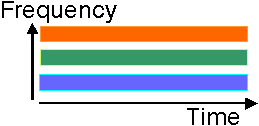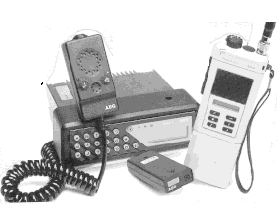
 |
JPL's Wireless Communication Reference WebsiteChapter: Cellular Telephone Networks
|

Figure: Time and bandwidth occupancy of three user signals with FDMA

Figure: equipment for private mobile radio system often uses FDMA.
Early cellular telephony mostly used FDMA analogue transmission. Walkie talkies and mobile networks for closed user groups often use FDMA. More advanced systems time-share frequencies among different user groups. This concept is called "trunking".
Another example of FDMA is AM or FM radio broadcasting, where each station has its own channel.